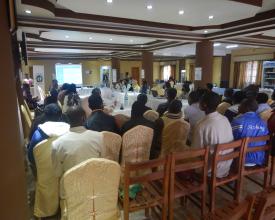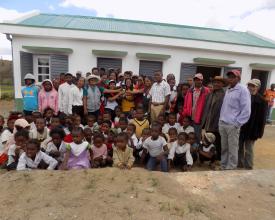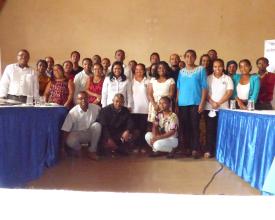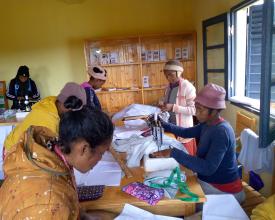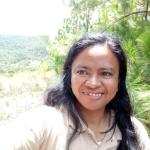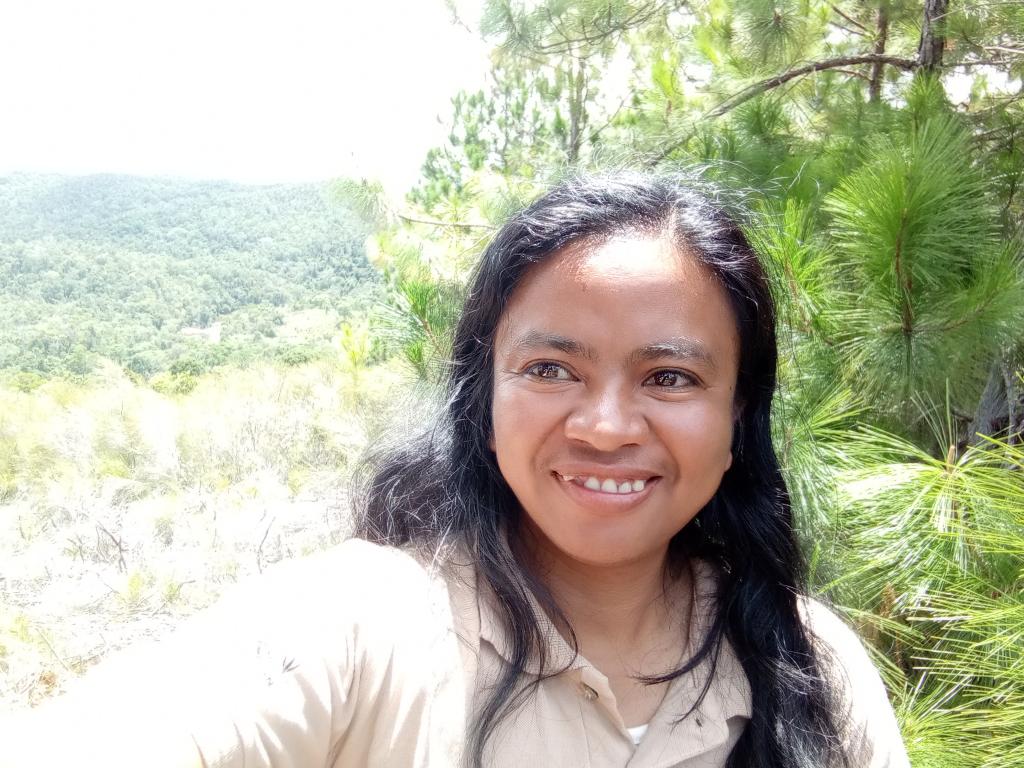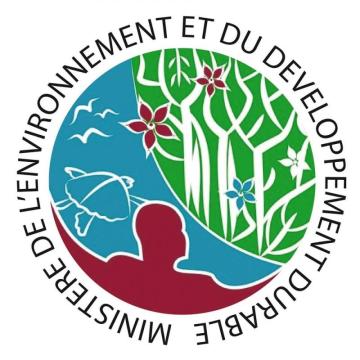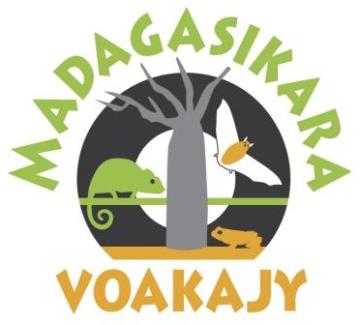
Updating the management plan of Mangabe Reserve and assisting local communities through improving infrastructure and facilities
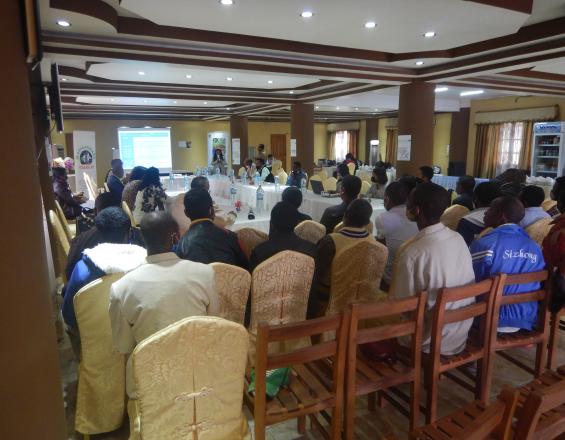
The Mangabe protected Area is a 27,346ha Reserve established in the Alaotra-Mangoro Region, eastern Madagascar in 2015. It aims to preserve some of Madagascar’s endemic and Critically Endangered species from extinction, while maintaining key ecosystem services for human wellbeing. Through the IMET assessment of the Mangabe Reserve in January 2020, infrastructure and facilities and assistance for the communities got the lowest scores. All these issues could be resolved if the Reserve’s management plan was updated and all the roles, responsibilities and processes are clarified in this document. Therefore, updating the management plan was the first priority. The second priority action was related to improving infrastructure, equipment and facilities. As a result, the five year (2022-2026) management plan of the Mangabe Reserve has been updated and communities' assistance was responded to through the purchase of two motorbikes, building of three information centers, and the improvement of the Mangabe campsite.
Contexte
Challenges addressed
Despite the protection and conservation efforts to date, forest cover in Mangabe Reserve continues to decline. According to the online platform Global Forest Watch (www.globalforestwatch.org ), the forest cover loss is 2,872.92ha between 2015 and 2021 which is 10.5% of the total surface of Mangabe Reserve. This decline is the result of complex issues including the increasing demand for timber products, the increasing demand for fertile soil, the lack of direct and regular benefits from conservation, the poor enforcement of regulations and the low recovery of forest after disturbance. These issues need to be addressed rapidly and efficiently through updating the Mangabe management plan and implementing key actions defined with all stakeholders.
Emplacement
Traiter
Summary of the process
Building information centers is part of implementation of Mangabe management plan 2022-26. As we envisioned the local communities to lead the management of Mangabe Reserve by 2040, the use of information centers is one way to engage local communities through giving them necessary documents and building their capacity. We aim to see Mangabe Reserve as a home for people and nature, benefitting each other. Forest cover and quality will be maintained to provide essential ecosystem services for people and wild species. Mangabe’s wild species will be assessed as viable and non-threatened. Local communities will lead the sustainable management of the Mangabe Reserve.
Building Blocks
Engaging key stakeholders to update the management plan of Mangabe Protected Area
After obtaining the permanent status of the Mangabe Protected Area in 2015, the first management plan was developed and implemented. In August – December 2019, we already ran community consultations on what should be included in the new management plan. In 2021, we ran three workshops to update the management plan. The first workshop involved MV team members and the regional representatives of the Ministry of Environment and Sustainable Development. The aim of this workshop was to write the updated management plan and to prepare the following workshops. Following the protected area management law, the updated management plan was presented, discussed and approved at regional level on 19-20th August 2021 involving regional and local authorities. In the end, Madagasikara Voakajy team made relevant changes according to the feedback received. Then, to comply with the law, the management plan was validated at the national level during a meeting of the protected area management committee on 22nd October 2021. The updated management plan includes the valorization of natural resources and improvement of human well-being. After doing relevant changes from participants ’feedbacks, the updated Mangabe management plan was ready to share with relevant authorities on January 2022.
Enabling factors
To update the management plan, active participation of all stakeholders is the main key enabling factor for this building block. All communities and stakeholders (regional and national) were involved in developing the management plan. All their inputs and feedbacks were considered and included in the updated management plan.
Lesson learned
The update of Mangabe management plan made us reflect on having sufficient data. For instance, regarding social data, we did not have the trends of the population numbers living around the Protected Area. We also did not monitor other social aspects including health and schools. Even though our teams go to the field regularly, there is a lack of data for mapping such as rivers, villages, and trails. This serves us as lessons to create a database on social, economic, and ecological aspects when the five year management plan is over. The management plan plays an important role when seeking funds to implement the activities and it is also a reference tool for assessment.
Establishing information centers in Mangabe Reserve
The IMET evaluation of Mangabe Reserve in 2020 revealed weaknesses in infrastructure, capacity and communication that hamper effectiveness of the Reserve. Sustainability of the Reserve depends entirely on the capacity of the local communities to manage it. This is compounded by poor education levels of the population and difficult access to the villages. Over the past years, we have been bringing technicians from the towns to inform and train community members. It is now time to make this knowledge available locally so that youth who are better educated can access and use them as needed. Our challenge until 2030 is to establish an information center at each of the ten villages within Mangabe Reserve. In 2021, we started the initiative to build three information centers in three villages (Mangabe, Andranomandry, and Avolo) within the Mangabe Reserve. At the center, all community members will be able to obtain information about the Reserve and the existing regulations from one place. They will also be able to learn about improved farming techniques and read documents on financial management, personal development, etc. The center will represent the permanent presence of the Reserve that people will know and respect. As a result, we expect annual forest cover loss to decrease below 250ha from 2022.
Enabling factors
- Consult and collect the needs of local communities
- Local communities give act of land endowment to build the information centers
- Involve community members during the process of the building of information centers
Lesson learned
To run information centers, we planned monthly events involving staffs from Ministry representatives and other guests to cover relevant topics for the local communities (importance of Protected Area, sustainable agriculture, health and hygiene…). Due to the delay in the building of information centers, acquisition and transport of equipment, and fieldwork missions, this objective was not achieved as planned. This led us to design an annual planning of the use of information centers. In 2022, the information center in Mangabe village was used for sewing and embroidery course for the women group, the information center in Andranomandry was dedicated for alphabetization course for adult people, and the information center in Avolo village was mainly used for community meetings.
Impacts
- The Mangabe management plan was validated at all levels (local, regional, and national) in 2021. The vision is that within 20 years, Mangabe Reserve will be managed by local communities and will provide ecosystem services and economic benefits for the Malagasy population.
- As direct impacts of the project, information centers in the three villages (Mangabe, Andranomandry, and Avolo) were used by community members (Community Based Associations, youths, women group, and local authorities) to run meetings and exchange information. Communities visit also these information centers to read useful books during their spare time. Particularly, the information center in Mangabe village was used by the Women group called “Miavotra” for their sewing and embroidery course between July and September 2022. In October 2022, the Miavotra group sold their first products to visitors of the Aqua-firma group (https://www.aqua-firma.com/) and to two staff members of Chester Zoo. After discussion, they decided to allocate part of the proceeds to the purchase of materials ($13). During the Chester Zoo Expedition in January 2023, they achieved a sales income of $105 (460 000 Ariary).
- Communities were timely assisted through the use of motorbikes by Madagasikara teams in case of urgent reports and also through regular fieldworks to monitor their progress towards their management on natural resources.
Beneficiaries
- Regional and national representatives of the Government, Rural Communes and villages within and around Mangabe Reserve, local communities
- Target species including the Golden Mantella frog (Mantella aurantiaca) and lemurs (Indri indri, Propithecus diadema)

